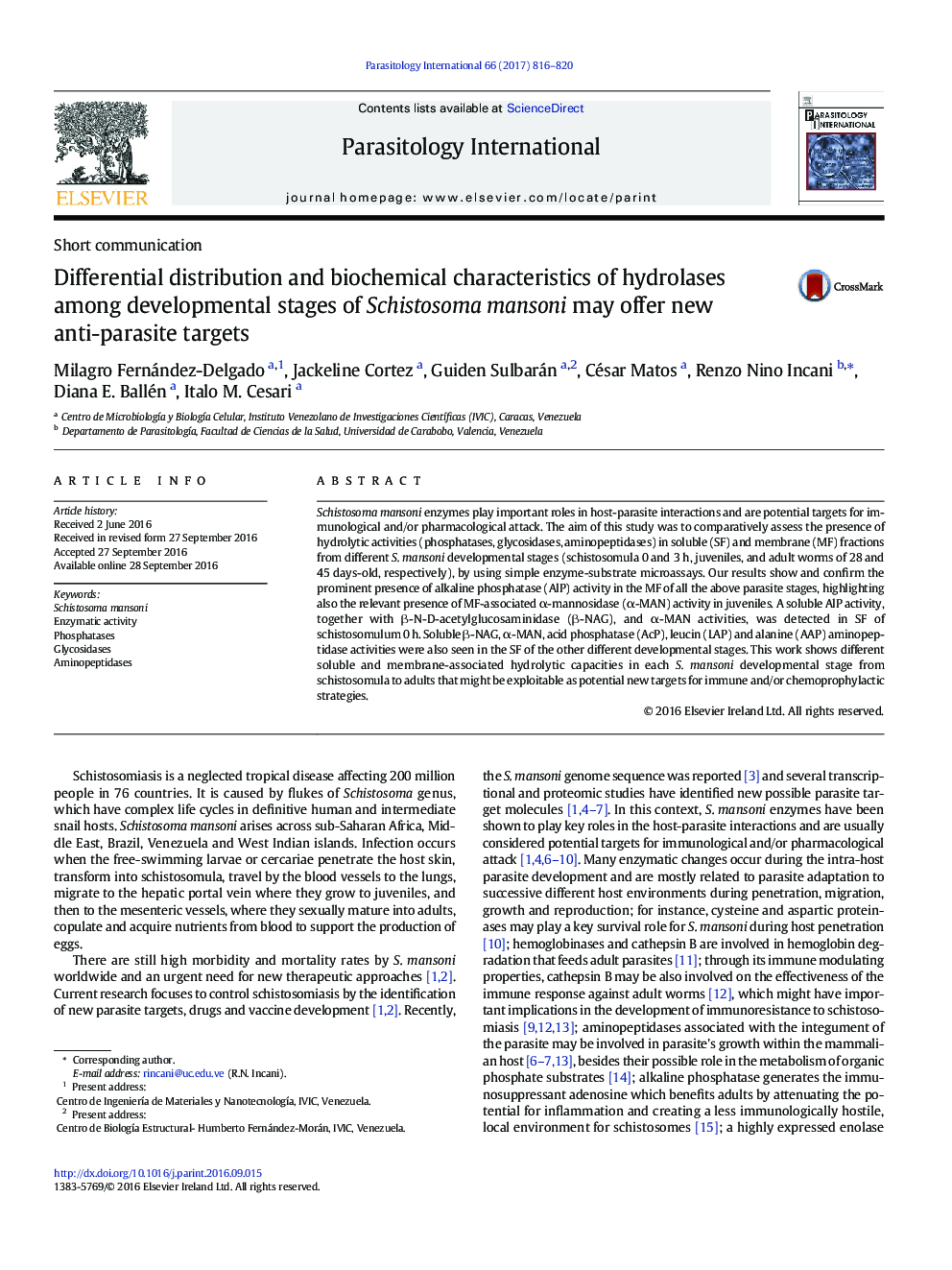| Article ID | Journal | Published Year | Pages | File Type |
|---|---|---|---|---|
| 5674321 | Parasitology International | 2017 | 5 Pages |
â¢Enzymatic differences among S. mansoni stages may offer new anti-schistosome targets.â¢Alkaline phosphatase was confirmed as a prominent enzyme in all S. mansoni stages.â¢Î±-Mannosidase came out as a particular enzymatic feature of immature adult worms.
Schistosoma mansoni enzymes play important roles in host-parasite interactions and are potential targets for immunological and/or pharmacological attack. The aim of this study was to comparatively assess the presence of hydrolytic activities (phosphatases, glycosidases, aminopeptidases) in soluble (SF) and membrane (MF) fractions from different S. mansoni developmental stages (schistosomula 0 and 3 h, juveniles, and adult worms of 28 and 45 days-old, respectively), by using simple enzyme-substrate microassays. Our results show and confirm the prominent presence of alkaline phosphatase (AlP) activity in the MF of all the above parasite stages, highlighting also the relevant presence of MF-associated α-mannosidase (α-MAN) activity in juveniles. A soluble AlP activity, together with β-N-D-acetylglucosaminidase (β-NAG), and α-MAN activities, was detected in SF of schistosomulum 0 h. Soluble β-NAG, α-MAN, acid phosphatase (AcP), leucin (LAP) and alanine (AAP) aminopeptidase activities were also seen in the SF of the other different developmental stages. This work shows different soluble and membrane-associated hydrolytic capacities in each S. mansoni developmental stage from schistosomula to adults that might be exploitable as potential new targets for immune and/or chemoprophylactic strategies.
Graphical abstractDifferential distribution of hydrolases among developmental stages of S. mansoni.Download high-res image (157KB)Download full-size image
